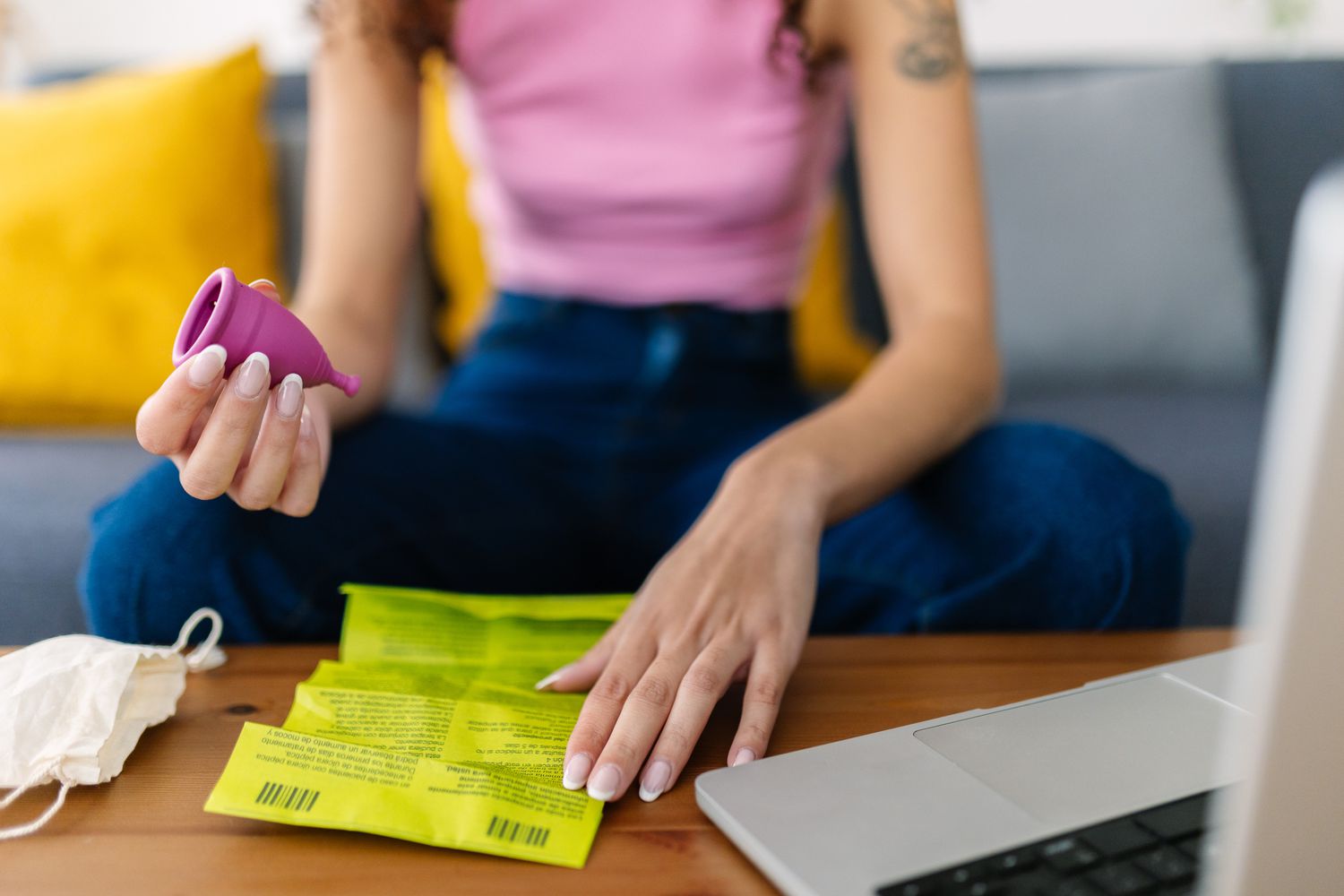A Comprehensive Guide to Using and Caring for a Menstrual Cup

A menstrual cup is a flexible, bell-shaped device that's placed in the vagina to collect menstrual blood during your period. It's similar in concept to a diaphragm or a cervical cup and can be used instead of a tampon or pad.
Menstrual cups are typically made from silicone or latex. Most are reusable, but disposable menstrual cups are also available. People may prefer menstrual cups because they are more eco-friendly and cost-effective than other options, can be kept in place for several hours, and are generally less leaky than tampons or pads.
Menstrual cups come in a variety of materials, shapes, and sizes. They can also vary in terms of flexibility and firmness. Some cups have a stem at the bottom to help with cup removal. Depending on the product, you may be able to clip the stem shorter before use for comfort.
Menstrual cups typically come in two sizes: a smaller cup for people under 30 who haven't previously been pregnant or given birth and a larger cup for people over 30 or who have been pregnant or given birth. Some companies may offer additional sizes, such as smaller sizes for teenagers or beginning users.
It's important to find a menstrual cup that fits you properly. Cups that are too small may leak, while cups that are too large may cause discomfort. You may want to try a few brands to see which are easiest to insert and most comfortable to wear. Although menstrual cups don't require a prescription from an OB-GYN or other healthcare provider, discussing menstrual cup sizing and fit with them can be helpful.
Before using a menstrual cup for the first time, wash your hands thoroughly with soap and water. You should also wash the cup out and remove any residue or lint that may be present from the cup's packaging. Most manufacturers recommend sterilizing a menstrual cup before use, which may involve placing the cup in boiling water for several minutes.
It's common to feel intimidated when first using a menstrual cup. Practice is key; the more you use your cup, the more comfortable you will become. After the initial learning curve, inserting and removing the cup will get easier.
Here are the basic steps for properly using your menstrual cup:
You can keep your menstrual cup inside for 4-12 hours, depending on your menstrual flow, the brand of cup, and manufacturer instructions.
You should remove your cup and clean it every 4-12 hours, or sooner if needed. Before removing the cup, wash your hands with soap and water. You'll want to remove the cup slowly and gently to avoid spilling its contents. Make sure to wash the cup between each use.
Here are the steps for removing a menstrual cup:
After you remove the cup and clean out its contents, wash the cup with soap and water before using it again. You don't have to sterilize it between uses during your period. Most manufacturers advise sterilizing the cup once your period is over for the month before using it again.
Sterilization typically involves boiling the cup in water for 5-10 minutes. After boiling it, thoroughly dry the cup. Store the completely dry cup in an appropriate container or a fabric bag made of breathable material. Ensure that it's not airtight, as bacteria or mold is more likely to build up in a container that isn't breathable.
Periodically check your menstrual cups for mold, scratches, or cuts, and replace cups when needed.
You can do almost anything while using a menstrual cup, including all types of physical exercise. While it's not advised to have sex with certain brands of menstrual cups, some types are fine to use during sex. Check with your cup manufacturer for guidelines.
Studies have found no increased infection risk when people properly use menstrual cups. Leakage is similar to other types of period products, such as pads and tampons. Most people find cups comfortable and unobtrusive, provided that you use the cups as directed.
You can reduce your chance of infection by cleaning and storing the cup properly and cleaning it out every 4-12 hours. You can minimize leakage and discomfort by ensuring proper placement of the cup and a good seal between the cup and your vaginal walls.
It's also important that your cup is the correct size. Trying different brands can be helpful, as cups can differ in shape and material.
Other troubleshooting tips to keep in mind:
Menstrual cups are devices used during your period to collect menstrual blood. They can be kept inside the vagina for up to 12 hours and offer a more convenient, affordable, and eco-friendly choice compared to other options like pads or tampons.
Menstrual cup insertion and removal may be challenging initially, but most users learn quickly and find the cups to be an effective and comfortable period product.




